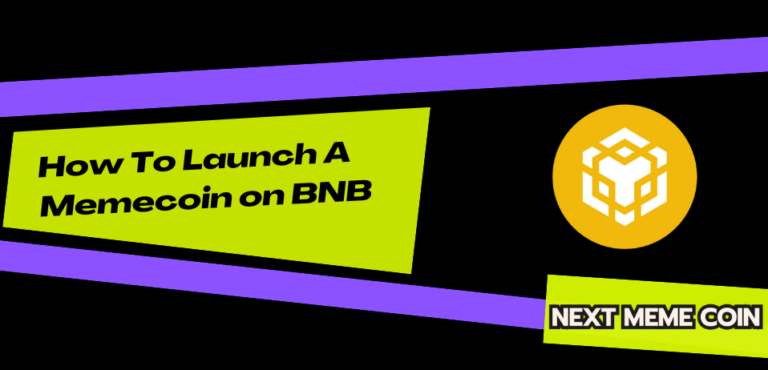How to Make a Meme Coin on the Sui Blockchain
Imagine a world where a playful idea, born from the depths of internet culture, transforms into a digital asset that captures the imagination of millions. That’s the magic of meme coins—a phenomenon that’s swept through the cryptocurrency landscape like wildfire, turning casual enthusiasts into overnight tycoons and sparking debates about value, community, and the future of finance. If you’ve ever scrolled through X and wondered how a token inspired by a hippo or a pug could skyrocket to millions in market cap, you’re not alone. And here’s the kicker: you don’t need to be a coding genius or a Wall Street wizard to join the fray. With the Sui blockchain, a platform that’s redefining speed and scalability in the crypto realm, creating your own meme coin is more accessible than ever.
The crypto space is buzzing with fresh energy. Sui, a Layer 1 blockchain crafted by the innovators at Mysten Labs, has emerged as a darling for developers and dreamers alike. Its high throughput, low fees, and developer-friendly tools make it a perfect playground for launching a meme coin that could ripple across the digital ether. Whether you’re here to ride the wave of a viral trend or to carve out a niche in the ever-evolving Web3 tapestry, this guide will walk you through every step of the process. From dreaming up a quirky concept to deploying your token on Sui’s testnet, I’ll unravel the intricacies with the enthusiasm of a storyteller and the precision of a seasoned observer. So, grab a coffee, settle in, and let’s embark on this journey together.
Why Choose the Sui Blockchain for Your Meme Coin?
Before we dive into the how-to, let’s explore the why. The cryptocurrency ecosystem is a crowded bazaar, with platforms like Ethereum, Solana, and Binance Smart Chain vying for attention. So why does Sui stand out as the canvas for your meme coin masterpiece? Picture a highway where transactions zip by at lightning speed, unhindered by traffic jams or exorbitant tolls. That’s Sui—a blockchain designed from the ground up to handle massive volumes with sub-second finality. Its secret lies in an object-centric model and the Move programming language, a duo that delivers unparalleled efficiency.
In practical terms, Sui boasts transaction speeds that can reach up to 125,000 transactions per second, dwarfing many competitors. Gas fees? They’re a whisper compared to the roars of Ethereum’s past. For a meme coin, where community hype can spark a frenzy of trades, this scalability is a game-changer. Imagine your token—let’s call it “HippoHype”—gaining traction on X, with thousands of users buying in without breaking the bank on fees. Sui makes that possible. Plus, its eco-friendly consensus mechanism sidesteps the energy guzzling of proof-of-work chains, aligning with a world increasingly conscious of its carbon footprint.
But it’s not just about tech specs. Sui’s developer ecosystem is blossoming, with tools like the Sui CLI and SDK smoothing the path for creators. As of early 2025, the network’s meme coin scene is heating up, with tokens like Sudeng ($HIPPO) and Fud the Pug ($FUD) already making waves. Sudeng, inspired by a baby pygmy hippo named Moo Deng, hit an all-time high of $0.018 in October 2024, fueled by a mix of community zeal and charitable flair. Fud the Pug, with its pug-faced charm, has carved out a niche with humor-driven marketing. These pioneers prove Sui’s potential as a launchpad for meme coins that blend fun with functionality. Ready to join them? Let’s get started.
Step 1: Crafting Your Meme Coin Concept
Every great meme coin begins with an idea—a spark that ignites laughter, nostalgia, or sheer absurdity. Think of Dogecoin’s Shiba Inu or Shiba Inu’s playful rivalry with its predecessor. Your concept is the soul of your token, the hook that reels in a community. So, where do you start? Sit back and ponder: what’s trending in the cultural zeitgeist of 2025? Maybe it’s a viral animal like Moo Deng, or perhaps a quirky phrase dominating X threads. The key is relatability—something that resonates with the internet’s collective psyche.
Take inspiration from Sui’s own ecosystem. The name “Sui” means “water” in Japanese, so water-themed tokens have a natural fit. Picture a coin called “AquaLad,” tied to a mascot of a mischievous water sprite, or “DripKing,” riffing on the slang for style and swagger. Whatever you choose, keep it simple yet memorable. Your token’s name, symbol (think three to six letters, like $DRIP), and backstory will define its identity. Maybe AquaLad promises to “flood the market with fun,” complete with a lore about saving digital oceans. This narrative isn’t just fluff—it’s the glue that binds your community.
Once you’ve nailed the concept, sketch out your tokenomics—the economic blueprint of your coin. How many tokens will exist? A billion? A quintillion? Sudeng opted for a billion $HIPPO tokens, with 9 decimal places for micro-transactions, a common meme coin trait mimicking fiat subdivisions. Will you burn tokens to create scarcity, or airdrop them to early adopters? These choices shape your coin’s trajectory, so mull them over carefully. For now, jot down your ideas—we’ll refine them as we go.
Step 2: Setting Up Your Development Environment
Now, let’s get our hands dirty—or at least, digitally so. Creating a meme coin on Sui requires a basic setup, but don’t worry if you’re not a tech whiz; I’ll guide you like a friend showing you a new gadget. First, you’ll need a few tools: the Sui Command Line Interface (CLI), a Sui-compatible wallet, and a code editor like Visual Studio Code. These are your paintbrushes and canvas.
Head to the official Sui documentation at docs.sui.io and download the Sui CLI. It’s your gateway to interacting with the blockchain. Installation varies by operating system—Windows, macOS, or Linux—but the process is straightforward, with commands like “cargo install sui” for Rust-savvy users. Next, grab a wallet. Options like Sui Wallet or Suiet Wallet work seamlessly with Sui’s ecosystem. Download the browser extension from their official sites (e.g., suiet.app), set it up, and secure your seed phrase—those 12 words are your lifeline to your funds.
With your wallet ready, connect to Sui’s testnet. This sandbox lets you experiment without real money. Fund your wallet with testnet SUI tokens via the faucet on Sui’s developer portal. It’s like Monopoly money—perfect for practice. Open your code editor, create a new project folder (say, “AquaLadCoin”), and you’re set to write some code. If this feels daunting, consider partnering with a developer or a firm like Antier Solutions—they can handle the tech while you focus on vision.
Step 3: Writing Your Smart Contract with Move
Here’s where the rubber meets the road: coding your meme coin’s smart contract. Sui uses Move, a programming language born from Meta’s Libra project, designed for safety and simplicity. Don’t let “coding” scare you—Move is more approachable than it sounds, and we’ll keep it basic. Your contract defines your token’s rules: its name, supply, and functions like minting or transferring.
Open your editor and create a file called “aqua_lad.move” in your project folder. Here’s a sample to get you started, adapted from Sui’s coin creation docs:
module aqua_lad::aqua_lad_coin {
use sui::coin::{Self, Coin, TreasuryCap};
use sui::transfer;
use sui::tx_context::{Self, TxContext};
struct AQUA_LAD has drop {}
fun init(witness: AQUA_LAD, ctx: &mut TxContext) {
let (treasury, metadata) = coin::create_currency(
witness,
9, // Decimals
b"AQUA", // Symbol
b"AquaLad", // Name
b"A coin to flood the market with fun", // Description
option::none(), // No icon for now
ctx
);
transfer::public_freeze_object(metadata);
transfer::public_transfer(treasury, tx_context::sender(ctx));
}
public entry fun mint(
treasury_cap: &mut TreasuryCap,
amount: u64,
recipient: address,
ctx: &mut TxContext
) {
let coin = coin::mint(treasury_cap, amount, ctx);
transfer::public_transfer(coin, recipient);
}
}
This code does a few things. The “init” function creates your coin with a one-time witness (AQUA_LAD), setting its symbol, name, and description. The 9 decimals mean 1 AQUA equals a billion base units, ideal for small trades. The “mint” function lets you create new tokens, controlled by a TreasuryCap for security. Test this on the testnet using the Sui CLI: “sui client publish –path ./AquaLadCoin”. Watch for errors, tweak as needed, and soon you’ll have a deployed contract.
Step 4: Testing and Deployment
Before your coin goes live, it needs a trial run. Deploy it to Sui’s testnet and simulate transactions—mint some AQUA, transfer it between wallet addresses, and check for bugs. The Sui CLI’s “call” command (e.g., “sui client call –function mint”) lets you test minting. If all goes smoothly, you’re ready for the real deal: the mainnet. Fund your wallet with real SUI from an exchange like Binance or KuCoin, then publish your contract again, this time on mainnet. Congrats—your coin exists!
But deployment is just the beginning. Audit your contract for security—firms like Nadcab offer this service—or use open-source tools to catch vulnerabilities. A secure coin builds trust, and trust is gold in the meme coin world.
Step 5: Building Your Community and Launching
A meme coin without a community is like a joke without a punchline—flat. Head to X, Telegram, and Discord to rally your troops. Share your AquaLad story, drop memes, and host giveaways. Sudeng’s success came from blending humor with a cause (wildlife conservation); find your angle. Airdrop tokens to early supporters—say, 5% of your supply—to spark buzz.
For trading, list your coin on a Sui decentralized exchange (DEX) like Cetus Finance (cetus.zone) or SuiSwap. Provide liquidity by pairing your tokens with SUI in a pool, ensuring smooth trades. Announce your launch with fanfare—think X posts like “AquaLad is here to make waves!” Timing matters; align with a trending topic for max impact.
Step 6: Growing and Sustaining Your Meme Coin
Post-launch, the real work begins. Keep your community engaged with updates, contests, or new features like staking. Partner with influencers on X—someone with 50K followers could amplify your reach. Monitor your coin’s performance on DEX Screener (dexscreener.com) and tweak your strategy. If AquaLad takes off, consider listing on centralized exchanges like Bybit for broader exposure, though fees can range from $10,000 to millions.
Stay transparent—share your roadmap and tokenomics openly. Evolve your coin’s utility; maybe AquaLad holders get NFT perks or voting rights in a DAO. The meme coin graveyard is full of one-hit wonders—sustained effort keeps yours alive.
Challenges and Considerations
Let’s pause for a reality check. Meme coins are a rollercoaster—thrilling but risky. Prices can soar 665% like AAA Cat did in early 2025, then crash just as fast. Scams lurk, and hype can fizzle. Sui’s low fees and speed mitigate some risks, but you’ll need grit and luck. Research competitors, set realistic goals, and never invest more than you can lose. If in doubt, consult a pro—firms like Debut Infotech (debutinfotech.com) offer end-to-end support.
The Bigger Picture: Why It Matters
Creating a meme coin on Sui isn’t just about profit—it’s about joining a movement. Meme coins are the jesters of crypto, poking fun at solemn finance while democratizing wealth creation. Sui’s rise reflects a broader shift toward scalable, user-centric blockchains, and your token could be a thread in that fabric. Will AquaLad be the next Dogecoin, or a fleeting ripple? That’s up to you.
As we stand in 2025, the question looms: are we building a playful distraction or a lasting legacy? The answer lies in your hands, woven through code, community, and a dash of whimsy. So, what’s your meme coin dream? The Sui blockchain awaits—let’s make it unforgettable.





